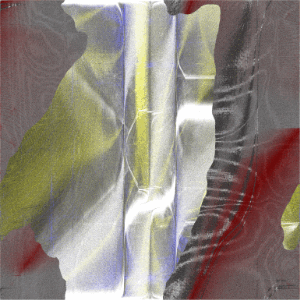
TJ Norris :: Greetings from the Northwest USA! So, I hear there may be a resurgence for the label Mille Plateaux, yes? How would you describe your role?
Marcus Gabler :: I do everything. A&R is the most important of course, but I also do Business Development, Art Director, promotion coordination, sourcing, IT project manager, database design, copy-writing, artist nursing, name it, I’m on it! Of course I got some helpers scouting promo contacts in various countries, plus my in house staff for occasional tasks.
TJN :: The label produced a fairly good-sized catalogue dating back to the early 1990’s starting with a compilation called Modulation & Transformation – correct? Can you say something about the evolution of the sounds captured by the label over its first decade or so?
MG :: Well, the evolution certainly followed the technical developments on one side. On the other, there was a development from rather raw, technoid, even breakbeat sounds to more intellectual, artful, minimal, well “serious” works.
TJN :: Did you coin the phrase “clicks + cuts”? How do you describe that phrase, I mean does it refer to what was also described as ‘glitch’?
MG :: Yes, C&C vs. Glitch practically have the same meaning, at least in the way they are commonly used. An English journalist first mentioned the term, but I forgot who it was. (Anyone? ===> email me!)
TJN :: I think many are interested in the rich drama and mystery in the roots of ambient music and its subsequent branches. Can these listeners still turn to Mille Plateaux to offer this type intimate listening experience?
MG :: Sure! In fact, I even decided to dedicate a new Mille Plateaux label to Ambient and Drone releases. I am talking of rather abstract Ambient that sometimes hardly can be called “Music.” Just like with Ritornell for abstract sound art, I want to separate the extremer sub-genres from the main label. This should help fans to find what they are looking for.
TJN :: The label has offered the world some of the very first opportunities to hear sound composers who create abstraction and other works, which might be defined as less than pop, and at times for seasoned ears. Complex compositions that often require a bit more from our current culture of ADD-interpolated social networking. Is there a basic theory that can be laid out that makes people stop and listen?
MG :: Nice question – hard to answer in a few words, though. While the process of forming musical taste is rather complex, it certainly has general rules. Listeners basically experience 3 values in music:
So much for the basic theory. Anyway, this was probably not what you were asking for.
So, generally, what makes people stop is a pretty face and a nice set of T&A, at least since we have MTV. What makes people listen is usually a blend of what is familiar on one side and new on the other. Of course, Mille Plateaux was appreciated for the latter. Providing state of the art sound was a main asset of Mille Plateaux. But this couldn’t go on forever. Glitch is easily 10 years old already and if there was a granular synthesis equivalent to the Clicks & Cuts compilations (“Grains & Gains”?) it hardly raised a lot of eyebrows.
TJN :: You have had the opportunity to work with some of the most acclaimed international composers like Terre Thaemlitz, Vladislav Delay, Wolfgang Voigt, Richard D. James, Carsten Nicolai and Andreas Tilliander – all who have gone on to develop amazing work, multimedia presentations and other new media. Can you talk about whom you are working with now and how they may influence the future of electronic music?
MG :: Well, there will hardly be any artists you have heard of before. The coming releases recruit from a new generation of younger artists. The names are under non-disclosure until the release.
I will leave it up to the world to judge about if and how Mille Plateaux may influence electronic music in the future. What I’d love to see is that my approach towards more musical qualities (i.e. composition, arrangement) is appreciated. My dream would be to release a Clicks & Cuts Remix album with danceable but still experimental tracks, 2 worlds that so far hardly got together the way I’d like to hear them. But probably, with Mille Plateaux, the label name itself is recognized more than certain individual artists. It’s like Clicks & Cuts was an album by the virtual artist “Mille Plateaux”. When you look at older MP releases, you may notice the MP logo on the front covers. MP always was treated a little like an artist name, especially for Clicks & Cuts: It was rather a MP compilation than a Various Artists compilation.
TJN :: There is this formal shift in the label’s compilations. Some are defined by beats, others by smooth atonal fluctuations, and others by cursive electronics that are punctuated by machines. How might you describe your discoveries for Clicks & Cuts 5 and when is it officially available?

MG :: The new Clicks & Cuts 5 – Paradigm Shift will be a 360 degree view on the glitch genre. The tracks range from 50-second sound sculptures via very listenable IDM/Dub-ish pieces via “classic” glitch pieces to pretty radical experimental tracks and finally close-to-ambient works.
I am very proud to have found highly recognizable, timeless tracks that all are of strong character and distinction. Clicks & Cuts 5 answers the question if experimental electronica music can be catchy without being “trivial” with a YES! Trust me, there isn’t a single track you won’t find circling your head after listening, asking yourself “where did I hear that…?”. Of course, it is not the sound revolution that the first 2 volumes suggested. The new Clicks & Cuts is probably richer in composition, arrangement and production than all previous compilations combined. Clicks & Cuts 5 will kick off the MP relaunch in early May 2010.
TJN :: Can you talk about the acquisition of the label by your company, Total Recall? And what ever became of the original founder, Achim Szepanski?
MG :: (from MP story.doc): “In late 2007, Rai Streubel suggested to me that MP might be available for sale. He used to be the sales manager at Force Inc / MP and was working as a freelance sales guy for my online music store TOTAL RECALL. Rai apparently saw great potential in the label, even though it was defunct for quite a while. So I agreed, mostly because I wanted to diversify from my record store business – who’s going to buy CDs five years from now anyway?”
The plan was to have MP founder Achim Szepanski as the A&R and Rai as the distribution guy. Well, to make a long story short, the cooperation didn’t work out. I wasn’t very happy about the MP acquisition at that point. I had no A&R, no sales guy, and no clue about that kind of music and no back-catalogue rights or anything but the name. So, in June 2008 I became the A&R of whatever might become of MP, just like a virgin becomes a mother.
Achim is now focusing on his writing; he released 2 books this year. When I last met him, he told me he was out of the music business and didn’t even turn on his stereo for months. I tried to get some feedback about our forthcoming releases from him, but apparently he wasn’t interested.
TJN :: People break free and move on to other paths. I’m always interested in how inventive people take something that has been tried and true, and transform it. Some mold what they have into something that shifts, slightly different, by keeping the essence of the original somehow. Others like to chip away at the surface until there’s nothing left, creating something out of the virtual dust or dregs left behind. How do you approach this task with Mille Plateaux?
MG :: I don’t. My artists do. My job is picking out the diamonds from the dirt and to channel and combine them into the right labels and compilations. Only occasionally, I give artists a few hints about what they might be able to improve in a track that I see potential in.
TJN :: What motivates you and can you talk about your musical roots and interests?
MG :: I never would have expected how much MP could mean to me one day! While 2 years ago I often hated the boring demos I had to listen to, by now it is my favourite task to listen to demos and whenever I discover another nice “one in a hundred” track, it makes me happy and I cant help checking which compilation it might fit on. It seems I truly found my dream job here!
::..:::…..:..::….:::::..:::..:::::::……:::…::.:::….::::..:..:::…::…….:::::
For more information about Mille Plateaux, visit their website at tjnorris.net.















![Pole :: Tempus Remixes (Mute) — [concise]](https://igloomag.com/wp/wp-content/uploads/2025/04/pole-tempus-remixes_feat-75x75.jpg)






![Hasbeen :: Bunker Symphonies II (Clean Error) — [concise]](https://igloomag.com/wp/wp-content/uploads/2025/04/hasbeen-bunker-symphonies-ii_feat-75x75.jpg)
